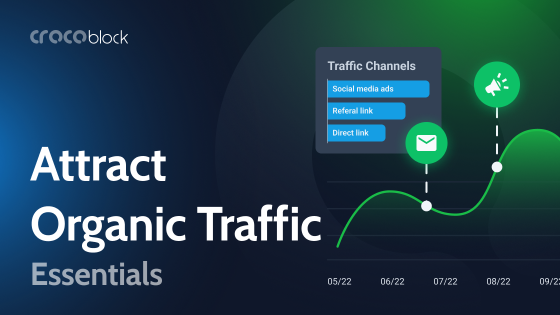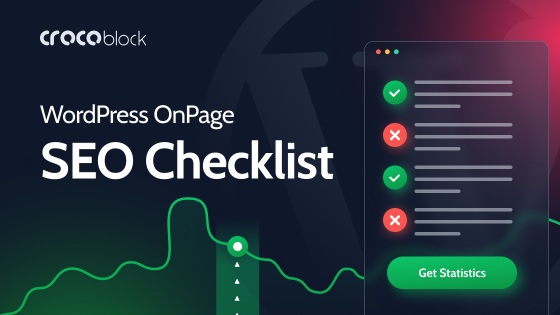If you’re planning a high-traffic event, you should prepare your site. There are a lot of different optimizations you can implement. Here are 10 tips to ensure your site loads quickly and doesn’t crash under heavy loads.
Table of Contents
- Run a Speed Test
- Minimize Images and Video in Your Content
- Remove or Disable Unnecessary Plugins and Themes
- Keep Essential Plugins and Themes Updated
- Minify JS and CSS
- Use a CDN
- Install a Caching Plugin
- Run a Load Test
- Reduce TTFB
- Pick a Good Host
- Conclusion
Run a Speed Test
First and foremost, you need to run a speed test to see your starting point. There are several ways to test your speed, but the simplest and easiest tool is Google’s PageSpeed Insights. Type in your site’s URL. You’ll get several data metrics.
Minimize Images and Video in Your Content
While images and video can often make your content more interesting to read, they also come with a downside: larger files and more loading time. An average image is between 500KB and 2MB, which can quickly add up if you have many of them on a single page.
This is especially relevant during high-traffic events when every MB counts. So, reduce the number of images and videos on the pages you anticipate getting a lot of visits.
Remove or Disable Unnecessary Plugins and Themes
Extra plugins can slow down your site and make it more difficult to handle high traffic. If you don’t need a plugin, consider removing it for the event duration. The same is true for unused themes.
Generally, deactivating a plugin is enough to stop it from slowing down your site. However, many plugins write to the WordPress database, and deactivating a plugin doesn’t remove its tables from the database. If you have any deactivated plugins, this can still affect your site and slow it down.
Unfortunately, manually or using a specific database cleaning plugin is the only way to clean your database. As such, it’s generally a good idea to only install the necessary plugins.
Keep Essential Plugins and Themes Updated
For the plugins and themes that you do need, it’s critical to keep them updated. Newer versions tend to be more efficient and will thus operate more smoothly, speeding up your site. Older versions are also a security threat, which can crash or slow down your site – or take it offline entirely.
Minify JS and CSS
To “minify” JavaScript and remove CSS, all the unnecessary whitespace and other characters from a file. By doing this, you can make the files as small as possible, which means they will load more quickly.
There are a few ways to minify your code. You can use WP Rocket or other optimization plugins. Additionally, some hosts will offer minification services built-in.
Use a CDN
Using a CDN is always a good idea, especially if your website visitors come from around the world instead of from a single location. But wait…what’s a CDN? CDN stands for Content Delivery Network.
NOTE:
CDNs essentially save your website content on different servers that are distributed around the world. When a visitor comes to your site, it will load from the nearest server (a “Point of Presence”) rather than sending data from the other side of the world. This means it will load faster for the user and put less strain on other servers.
Using a CDN is especially useful if you anticipate having visitors from a large variety of geographical locations.
Install a Caching Plugin
A caching plugin is a simple and easy way to improve your website’s speed. Caching plugins create “cached” or static versions of your web pages. These can be loaded more quickly, making them very useful during high-traffic events.
There are different WordPress caching plugins, but the most popular ones are WP Rocket, W3 Total Cache, and WP Super Cache. Many hosts also offer caching services, like Convesio and SiteGround.
Run a Load Test
A load test is a simulation of your site’s performance under certain conditions. Load tests are an excellent way to figure out “what will go wrong” before the day of the big event.
There are many different load-testing tools, but two of the best ones are Loader.io and RoboSwarm. The process of load testing can take a while, as you need to register your site and perform a few other checks first. But if you have the time, it’s worth doing.
Reduce TTFB
This acronym looks a little scary, but it’s a relatively simple concept. TTFB stands for “Time to First Byte” and measures how long it takes for the first piece of digital information (a byte) to go from your website’s server to the visitor’s web browser.
There are many tools for testing TTFB, including Pingdom, GTMetrix, and KeyCDN. Look for the number with ms after the test. Anything above 500 causes concern, while anything below 100 is perfect.
How can you reduce your TTFB?
Primarily by doing the other things on this list, such as using a CDN and picking a good host. You can also optimize your database, keep PHP updated, and create a static website using a WordPress static site plugin.
Pick a Good Host
Finally, it always pays to pick a good host. Some cheaper hosts cannot handle more significant amounts of traffic, and your site will go offline very quickly. Other hosts will run well under high traffic loads but may cost you a lot of money, even with little traffic.
The best solution is to find a host that can scale to handle traffic when necessary but doesn’t charge you for the extra resources that you don’t use. While this may not be something you can do quickly before your event, it’s still essential in the bigger picture.
Conclusion
When it comes to high-traffic events, it’s always best to be prepared. While your site may be able to handle the sudden influx of traffic, there will be some issues. As such, I recommend that you try to implement some of my suggestions above before the big day.

